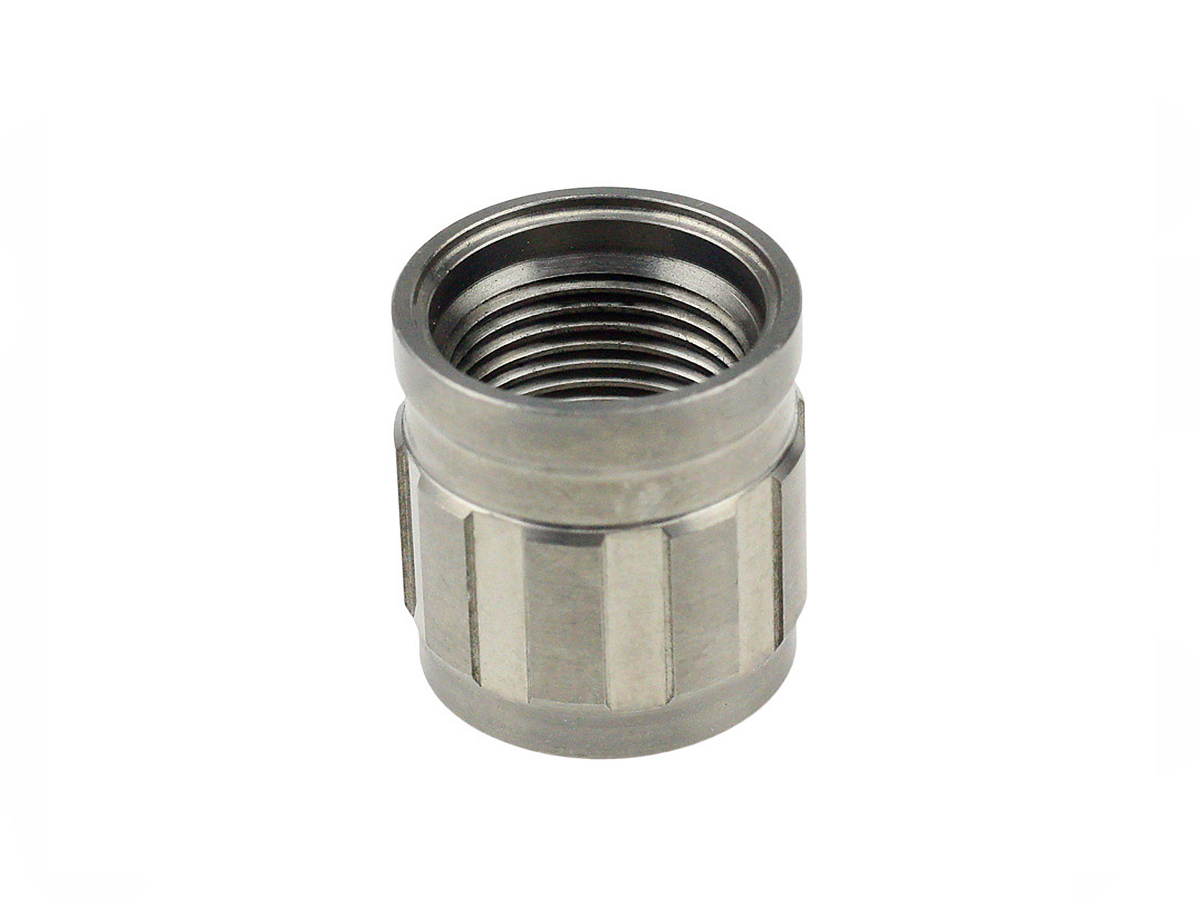CNC Machining of High-Performance Parts for the Automotive Sector
Introduction to CNC Machined High-Performance Automotive Parts
The automotive sector, particularly in motorsports and luxury vehicles, requires components with exceptional precision, reliability, and durability. Advanced CNC machining ensures that critical automotive parts—such as engine components, drivetrain elements, suspension systems, and aerodynamic parts—achieve tight tolerances and deliver optimal performance. Typical materials used include aluminum alloys (7075), alloy steels (4340), titanium alloys (Ti-6Al-4V), and stainless steels (SUS630).
With expert CNC machining services, manufacturers can produce consistently high-quality automotive components designed to excel under demanding conditions.
Material Performance Comparison for High-Performance Automotive Parts
Material | Tensile Strength (MPa) | Density (g/cm³) | Fatigue Resistance | Typical Applications | Advantage |
|---|---|---|---|---|---|
540-570 | 2.8 | Excellent | Engine brackets, suspension arms | Lightweight, high-strength | |
745-1080 | 7.85 | Outstanding | Transmission components, axles | Superior strength and durability | |
950-1100 | 4.43 | Exceptional | High-performance exhaust parts, suspension links | Exceptional strength-to-weight ratio | |
930-1200 | 7.78 | Outstanding | High-load shafts, precision components | Excellent corrosion resistance, strength |
Material Selection Strategy for CNC Machined Automotive Parts
Selecting suitable materials for automotive high-performance parts involves evaluating mechanical strength, weight reduction, corrosion resistance, and fatigue properties:
Aluminum 7075-T6 is ideal for lightweight structural components, offering high strength (up to 570 MPa tensile) while significantly reducing vehicle mass.
Alloy Steel 4340 is selected for transmission and drivetrain components due to its superior toughness, high tensile strength (up to 1080 MPa), and excellent fatigue resistance.
Titanium Ti-6Al-4V excels in applications requiring maximum performance and minimal weight, offering tensile strength up to 1100 MPa, crucial for parts like exhaust systems and suspension elements.
Stainless Steel SUS630 (17-4PH) is ideal for components exposed to harsh conditions, providing outstanding corrosion resistance and high mechanical strength (up to 1200 MPa).
CNC Machining Processes for Automotive Performance Parts
CNC Machining Process | Dimensional Accuracy (mm) | Surface Roughness (Ra μm) | Typical Applications | Key Advantages |
|---|---|---|---|---|
±0.005-0.02 | 0.4-1.6 | Engine mounts, suspension brackets | High versatility, excellent accuracy | |
±0.005-0.01 | 0.4-1.2 | Axles, transmission shafts | Precise rotational machining | |
±0.005-0.01 | 0.2-0.8 | Aerodynamic components, complex suspension parts | Intricate geometries, superior accuracy | |
±0.002-0.005 | 0.1-0.4 | Transmission gears, precision bearings | Ultra-precision finishes |
CNC Process Selection Strategy for High-Performance Automotive Parts
Selecting optimal CNC machining methods ensures automotive parts meet the highest standards:
Precision CNC Milling reliably produces structural components with tolerances ±0.005-0.02 mm, critical for fitting and performance.
CNC Turning delivers rotational accuracy (±0.005 mm) essential for drivetrain and transmission shafts.
5 Axis CNC Milling offers advanced control and high precision (±0.005 mm) for aerodynamic and complex suspension components.
CNC Grinding provides ultra-high precision (±0.002–0.005 mm) and surface quality, vital for transmission gears and precision bearings.
Surface Treatment Performance Comparison for Automotive Parts
Treatment Method | Surface Roughness (Ra μm) | Wear Resistance | Corrosion Resistance | Surface Hardness | Typical Applications | Key Features |
|---|---|---|---|---|---|---|
0.4-1.0 | Excellent | Excellent (≥1000 hrs ASTM B117) | HV 400-600 | Aluminum chassis components | Corrosion resistance, surface durability | |
0.4-1.2 | Exceptional | Good | HRC 55-62 | Steel drivetrain parts | Enhanced hardness, improved fatigue life | |
0.2-0.5 | Exceptional | Excellent (≥1000 hrs ASTM B117) | HV 1500-2500 | Transmission gears, drivetrain components | High hardness, low friction | |
0.8-1.6 | Moderate | Excellent (≥1000 hrs ASTM B117) | Unchanged | Stainless steel components | Superior corrosion resistance |
Typical Prototyping Methods for Automotive Components
CNC Machining Prototyping: Provides precise prototypes (±0.005 mm accuracy) for accurate performance testing and design validation.
Titanium 3D Printing: Enables rapid, accurate production (±0.05 mm accuracy) of lightweight, complex parts for early-stage testing in automotive designs.
Rapid Molding Prototyping: Offers rapid manufacturing of functional prototypes suitable for extensive real-world testing under realistic automotive conditions.
Quality Assurance Procedures
Coordinate Measuring Machine (CMM) Inspection (ISO 10360-2): Ensures dimensional accuracy within ±0.005 mm, critical for precise fitment in high-performance assemblies.
Surface Roughness Testing (ISO 4287): Validates surface quality meets required specifications (Ra ≤ 0.8 μm), vital for mechanical efficiency.
Mechanical and Fatigue Testing (ASTM E8/E466): Confirms tensile strength, yield strength, and fatigue life compliance, ensuring durability under extreme operating conditions.
Non-Destructive Testing (Ultrasonic Testing per ASTM E2375, Magnetic Particle Inspection per ASTM E1444): Detects internal defects, ensuring part reliability and integrity.
Metallurgical Analysis (ASTM E3/E407): Evaluates the effectiveness of grain structure and heat treatment, verifying optimal material properties.
Full Traceability and ISO 9001 Compliance: Comprehensive documentation ensures adherence to stringent automotive industry standards.
Industry Applications
Motorsport and racing vehicles.
High-performance drivetrain and suspension systems.
Luxury vehicle components requiring precision and reliability.
Related FAQs:
What materials are best for CNC machining high-performance automotive components?
How does CNC machining contribute to automotive component durability?
Which surface treatments best protect automotive parts?
Why are prototypes essential for automotive manufacturing?
What quality control measures ensure reliable automotive CNC parts?

